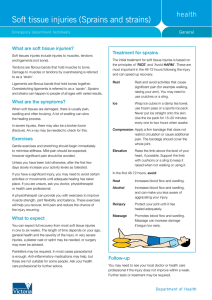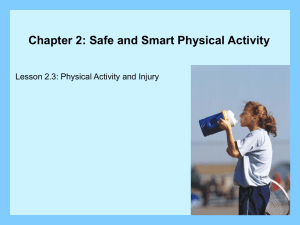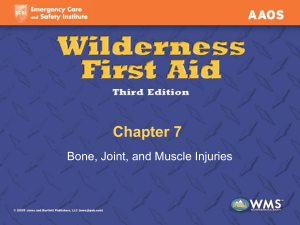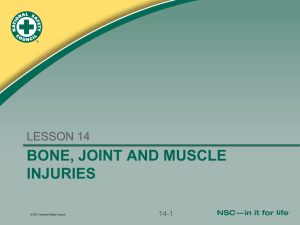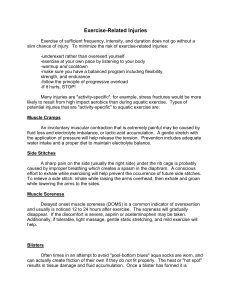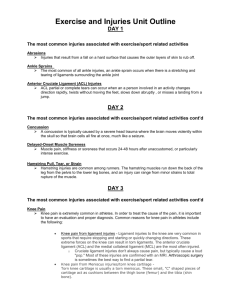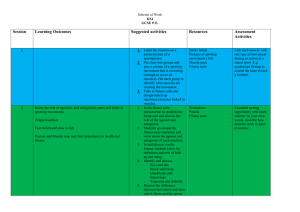Return-to-Play-Policy-Soft-Tissue
advertisement
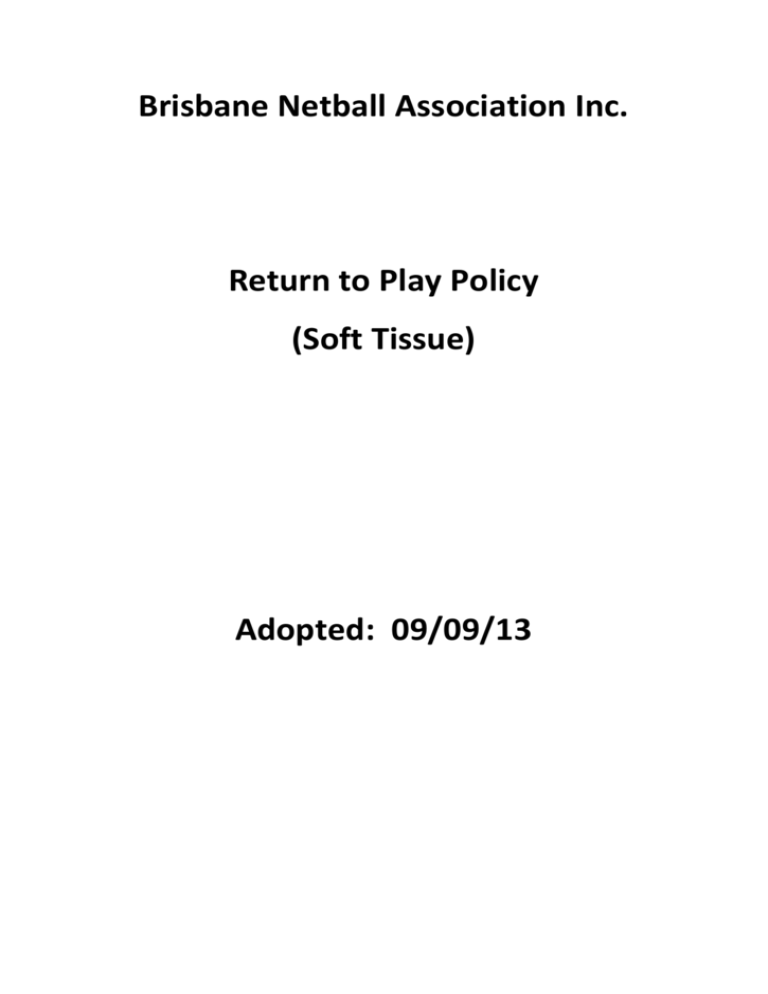
Brisbane Netball Association Inc. Return to Play Policy (Soft Tissue) Adopted: 09/09/13 Return to Play Policy Soft Tissue Injuries Soft tissue injuries are the most common injury in sport. Soft tissue refers to tissues that connect, support, or surround other structures and organs of the body. Soft tissue includes muscles, tendons, ligaments, fascia, nerves, fibrous tissues, fat, blood vessels, and synovial membranes. A soft tissue injury generally involves one or more of the following structures via sprain, strain or direct blows: • Muscle – muscles are made up of fibres that shorten and lengthen to produce movement of a joint. Muscles are attached to bone by tendons. • Tendon – tendons are slightly elastic connective tissue that connects muscle to bone. • Ligament – ligaments are strong bands of inelastic connective tissue that connect bone to bone. The biggest risk factor for soft tissue injury is a previous injury. Types of soft tissue injuries include: Acute injury - Injuries that occur from a known or sometimes unknown incident. Signs and symptoms develop rapidly eg ‘egg’ forming on ankle from inversion. Bruise (contusion, cork) - Bruises are caused by a direct force applied to the body such as being kicked or making contact with a player and result in compression and bleeding into the soft tissue (hematoma). Signs and symptoms: Swelling and/or discolouration. Sprain -Sprains are caused when the joint is forced beyond its normal range of motion resulting in overstretching and tearing of the ligament that supports the joint. Signs and symptoms: Swelling, loss of power or ability to bear weight, possible discolouration and bruising and/or sudden onset of pain. Strain - Strains are caused by muscles over-stretching or contracting too quickly, resulting in a partial or complete tear of the muscle and/or tendon fibres. Signs and symptoms: swelling, possible discolouration and bruising and/or pain on movement. Overuse Injury - Overuse injuries occur as a result of repetitive friction, pulling, twisting, or compression that develops over time. Signs and symptoms: Will develop slowly, inflammation, pain. The immediate treatment of any soft tissue injury consists of the RICER protocol – rest, ice, compression, elevation and referral. RICE protocol should be followed for 48–72 hours. The aim is to reduce the bleeding and damage within the joint. The No HARM protocol should also be applied – no heat, no alcohol, no running or activity, and no massage. This will ensure decreased bleeding and swelling in the injured area. This regime should be used for all ligament sprains, muscle sprains and muscle bruises. You can expect full recovery from most soft tissue injuries in one to six weeks. The length of time depends on your age, general health and the severity of the injury. In significant injuries, a plaster cast or splint may be needed. Sometimes surgery is the best option. Referral to a medical professional for soft tissue injuries which occur in sport or physical activity, other than those which are minor, is recommended. A player returning from injury that has previously been referred to a medical professional cannot return to play until cleared to do so by same. Source: Sports Medicine Australia


